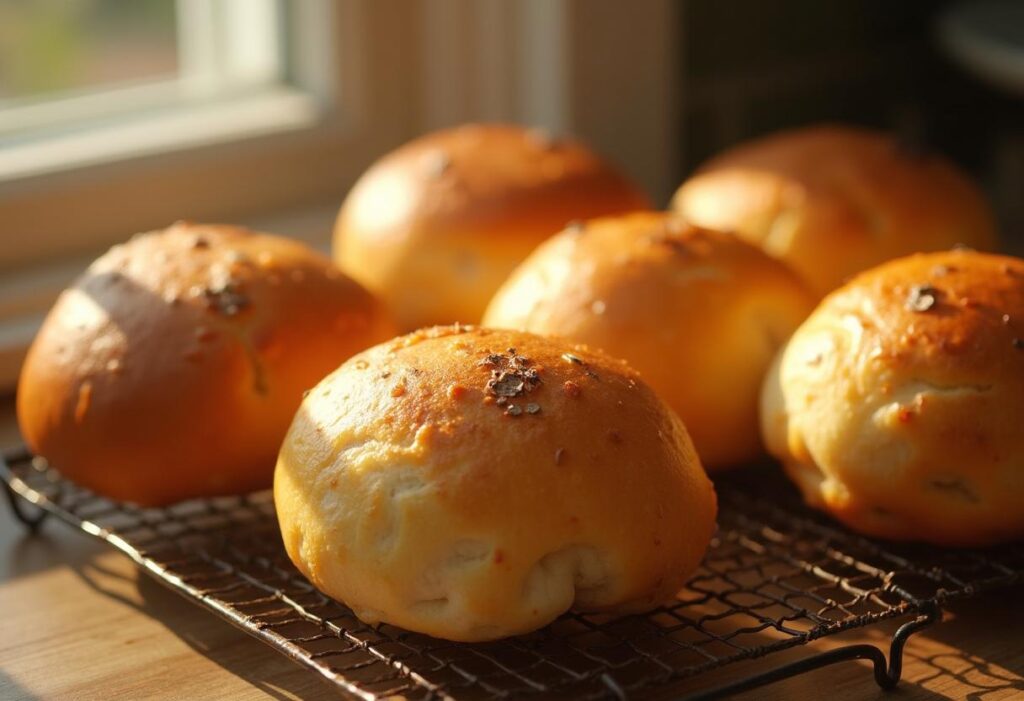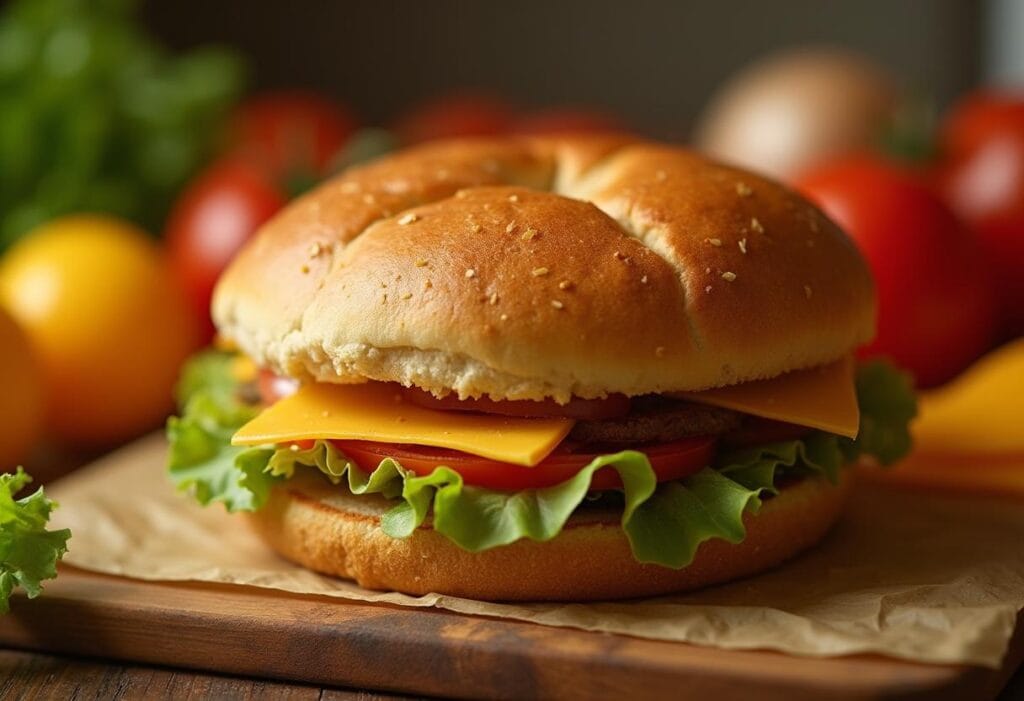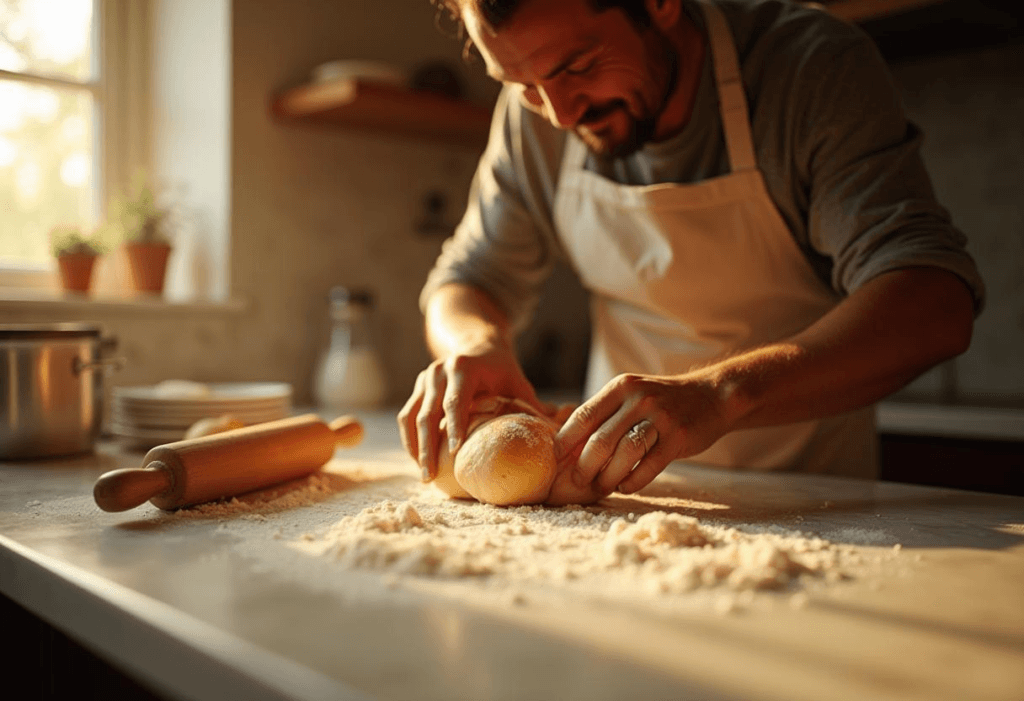What Is the Difference Between a Brioche Bun and a Normal Bun?
What is the difference between a brioche bun and a normal bun? This is a key question for anyone choosing the perfect bun. The type of bun you select can impact taste, texture, and overall enjoyment. Understanding the difference between a brioche bun and a normal bun ensures you pick the best option for your meal
But which one is better? Is brioche softer? Does a normal bun hold up better for juicy burgers? Let’s break down their key differences, pros, and cons so you can pick the perfect bun every time!
Want to explore healthier burger alternatives? Check out this Healthy Burger Bowl Recipe for a nutritious meal option!
What Is the Difference Between a Brioche Bun and a Normal Bun?
Origins and History of Brioche Buns
Brioche isn’t just a bun—it’s a French masterpiece. Dating back to the 15th century, brioche was originally a luxury bread, reserved for the wealthy because of its rich ingredients like butter and eggs. Today, it’s a staple in bakeries worldwide, famous for its soft, slightly sweet, and buttery flavor.
« Brioche is like the croissant’s fluffier cousin—rich, golden, and packed with flavor. »
💡 Wondering how brioche compares to other breads? Learn more about the difference between brioche and milk buns to see how they stack up!
Ingredients That Make Brioche Unique
Brioche is different from regular bread because it contains a high amount of fat from butter, eggs, and sometimes milk. This makes it softer, richer, and slightly sweeter than your typical bun.

Here’s a quick look at what goes into a brioche bun:
| Ingredient | Quantity (Per 1 Brioche Bun) |
|---|---|
| Flour | 125g |
| Butter | 40g |
| Eggs | 1 |
| Sugar | 10g |
| Milk | 30ml |
| Yeast | 5g |
| Salt | 1g |
Compared to a normal bun, brioche feels more like a pastry than just plain bread. That’s why it’s often used for gourmet burgers and fancy sandwiches.
Texture and Flavor Profile of Brioche Buns
Brioche has a soft, fluffy, and airy texture thanks to the high butter and egg content. When you press it, it bounces back like a soft pillow. It also has a slightly sweet, buttery taste that makes it great for both sweet and savory dishes.
If you’ve ever had a McDonald’s Brioche Burger or a gourmet sandwich, you’ve probably noticed how light and melt-in-your-mouth the bun feels. That’s the magic of brioche!
Common Uses for Brioche Buns in Cooking
Brioche buns are commonly used for:
- Burgers – The soft texture holds up well to juicy patties.
- Sliders – Mini brioche buns make for perfect small sandwiches.
- French Toast – The richness makes it ideal for soaking up custard.
- Breakfast Sandwiches – Egg and cheese sandwiches taste better on brioche.
If you want a bun that adds flavor instead of just holding the filling together, brioche is the way to go.
What Makes a Normal Bun Different from a Brioche Bun?
HTypes of Standard Buns (White, Whole Wheat, Potato, etc.)
A normal bun is any standard bread bun that isn’t enriched with eggs and butter like brioche. These include:
- White buns – The classic soft, slightly chewy burger bun.
- Whole wheat buns – Healthier, but sometimes a bit denser.
- Potato buns – Slightly softer than white buns, made with mashed potatoes.
💡 Curious about other bun varieties? Explore the difference between brioche and bread rolls to find the best fit for your next meal!
How Normal Buns Are Made: Key Ingredients and Process
Unlike brioche, normal buns contain fewer rich ingredients and focus on basic bread-making techniques.
Here’s a typical normal bun recipe:
| Ingredient | Quantity (Per 1 Normal Bun) |
|---|---|
| Flour | 125g |
| Water | 50ml |
| Yeast | 5g |
| Salt | 1g |
| Sugar | 5g |
| Oil/Butter | 5g |
As you can see, normal buns use water instead of milk, and less fat overall. This makes them chewier and firmer compared to brioche.
Texture and Flavor: How Do They Compare to Brioche?
A normal bun is more neutral in flavor—not too sweet, not too rich. This makes it perfect when you want the filling to be the star rather than the bread itself.
Texture-wise, normal buns tend to be:
- Chewier and firmer than brioche.
- Less fluffy, with a more structured bite.
- More absorbent, meaning they soak up sauces well.
Ever had a Big Mac or Whopper? That’s a normal bun in action. It’s sturdy enough to hold fillings together but soft enough to bite through easily.

Typical Uses for Normal Buns
You’ll typically find normal buns in:
- Fast-food burgers – They hold up well for high-volume production.
- Deli sandwiches – Works well with cold cuts and spreads.
- Hot dogs – Standard hot dog buns are just elongated normal buns.
Normal buns are versatile and budget-friendly, making them the go-to choice for everyday meals.
Difference Between a Brioche Bun and a Normal Bun: Key Factors
Ingredient Comparison: What Sets Them Apart?
Here’s a side-by-side comparison of the key ingredients:
| Feature | Brioche Bun | Normal Bun |
|---|---|---|
| Main Liquid | Milk | Water |
| Fat Content | High (Butter, Eggs) | Low (Little or No Butter) |
| Texture | Soft, Airy, Fluffy | Firm, Slightly Chewy |
| Flavor | Slightly Sweet, Buttery | Neutral, Slightly Savory |
| Best For | Gourmet Burgers, Fancy Sandwiches | Everyday Burgers, Fast Food |
Flavor and Texture Differences
- Brioche = Buttery, soft, and slightly sweet.
- Normal Buns = Chewy, neutral, and firmer.
Want to know how brioche is traditionally enjoyed in France? Read about how brioche is eaten in France for cultural insights!
Nutrition: Which One Is Healthier?
| Nutrient (Per Bun) | Brioche Bun | Normal Bun |
|---|---|---|
| Calories | 250 | 180 |
| Fat | 10g | 2g |
| Carbs | 30g | 28g |
| Protein | 6g | 5g |
Brioche has more fat and calories, making it a more indulgent choice. If you’re watching your diet, a normal bun is the healthier option.
Common Problems When Choosing Between Brioche and Normal Buns
Choosing the right bun isn’t always as easy as it seems. Sometimes, the bun feels too rich or too dry, or maybe it just doesn’t match the dish. Let’s tackle the most common bun-related dilemmas!
Why Does Brioche Feel Too Rich or Buttery?
Brioche is packed with butter, eggs, and milk, which gives it that soft, indulgent texture. But for some, this richness can be overwhelming, especially when paired with fatty meats like bacon cheeseburgers or BBQ brisket.
Solution:
- Use leaner meats (like turkey or chicken) to balance out the richness.
- Toast the brioche bun lightly to reduce the greasy feel.
- Try a potato bun instead—it’s softer than normal buns but less rich than brioche.
« Brioche is like a buttery cloud—it’s amazing, but sometimes you need a little contrast to appreciate it fully! »
Why Do Normal Buns Sometimes Feel Too Dry?
Normal buns have less fat, which means they can sometimes feel dry or stiff, especially if they’re not fresh.
Solution:
- Steam or lightly toast the bun to soften it up.
- Add sauces or butter to add moisture.
- Store buns properly to keep them from drying out—use an airtight container or wrap them in a damp paper towel before reheating.
Which Bun Holds Up Better for Burgers and Sandwiches?
This depends on the type of burger or sandwich you’re making:
« Think of brioche as the fancy suit and a normal bun as the reliable T-shirt—each has its time and place! »
| Dish | Best Bun Choice | Why? |
|---|---|---|
| Juicy Burgers (Beef, Bacon, BBQ, etc.) | Brioche | Soft and absorbs juices without falling apart. |
| Crispy Chicken Sandwich | Normal Bun | Sturdier structure holds crispy textures better. |
| Classic Cheeseburger | Normal Bun | Keeps things simple and balanced. |
| Breakfast Sandwich (Egg & Cheese) | Brioche | Slight sweetness pairs well with eggs. |
Making the Perfect Bun at Home: Brioche vs. Normal Bun Recipes
Why buy buns when you can make them fresh at home? If you love soft, homemade bread, here’s how to make both brioche and normal buns from scratch!
How to Make Brioche Buns from Scratch
Ingredients (Makes 6 Buns)
| Ingredient | Quantity |
|---|---|
| All-purpose flour | 3 cups |
| Butter (softened) | 6 tbsp |
| Sugar | 2 tbsp |
| Salt | 1 tsp |
| Warm milk | ½ cup |
| Eggs | 2 |
| Active dry yeast | 2 tsp |
Freshly baked brioche buns smell like heaven—soft, buttery, and absolutely irresistible!
💡 If you love buttery, rich flavors, you might also enjoy trying these milk brioche rolls for a homemade treat!
Instructions:
- Activate the yeast: Mix warm milk, sugar, and yeast. Let it sit for 5-10 minutes until it foams.
- Mix the dough: In a large bowl, combine flour, salt, and eggs. Add the yeast mixture and knead for about 10 minutes.
- Add butter: Gradually mix in the softened butter and knead until the dough is smooth.
- Let it rise: Cover the dough and let it rise for 1.5 to 2 hours, until doubled in size.
- Shape the buns: Divide into 6 equal portions and shape them into balls.
- Second rise: Let the buns rise again for 30 minutes on a baking sheet.
- Bake: Brush with egg wash and bake at 375°F (190°C) for 15-18 minutes, until golden brown.
« Freshly baked brioche buns smell like heaven in a kitchen—soft, buttery, and absolutely irresistible! »

How to Make Classic Normal Buns at Home
Ingredients (Makes 6 Buns)
| Ingredient | Quantity |
|---|---|
| All-purpose flour | 3 cups |
| Warm water | ¾ cup |
| Sugar | 1 tbsp |
| Salt | 1 tsp |
| Active dry yeast | 2 tsp |
| Oil (vegetable or olive) | 2 tbsp |
Instructions:
- Activate the yeast: Mix warm water, sugar, and yeast. Let it sit for 5-10 minutes until foamy.
- Mix the dough: In a large bowl, combine flour and salt. Add the yeast mixture and oil.
- Knead for 8-10 minutes until the dough is smooth.
- Let it rise: Cover and let the dough rise for 1-1.5 hours.
- Shape and proof: Divide into 6 pieces, shape into balls, and let them rise again for 30 minutes.
- Bake: At 375°F (190°C) for 15 minutes, until lightly golden.
« Normal buns are all about simplicity—just the right balance of softness and chewiness! »
Conclusion: Which Bun Is Right for You?
At the end of the day, the best bun depends on your taste and the dish you’re making.
- Love rich, buttery bread? Go for brioche.
- Prefer a neutral, chewy bun? Stick with a normal bun.
- Need a healthier option? Whole wheat or potato buns might be your best bet.
« The perfect bun isn’t just about bread—it’s about how it complements your meal. »
Looking for a fun twist? See how brioche hot dog buns can elevate your next cookout!
FAQs About Brioche and Normal Buns
Can I Substitute a Normal Bun for a Brioche Bun?
Yes, but keep in mind that brioche is richer and softer, so a normal bun might feel drier in comparison. If using a normal bun instead of brioche, consider adding butter or a little sweetness to balance the flavors.
Are Brioche Buns Suitable for Every Dish?
Not always! While brioche is delicious, it doesn’t pair well with very light dishes (like veggie burgers) because its richness can overpower the flavors.
How Can I Keep Buns Fresh Longer?
- Store in an airtight container at room temperature for up to 3 days.
- Freeze for up to 3 months—just wrap each bun tightly in plastic wrap.
- To revive stale buns, warm them in the oven at 300°F (150°C) for a few minutes.
Final Thoughts
Whether you’re team brioche or team normal bun, understanding their differences helps you choose the perfect bun for any meal. Now, go out there and enjoy your next burger, sandwich, or homemade creation like a true bun expert! 🍔🥪

